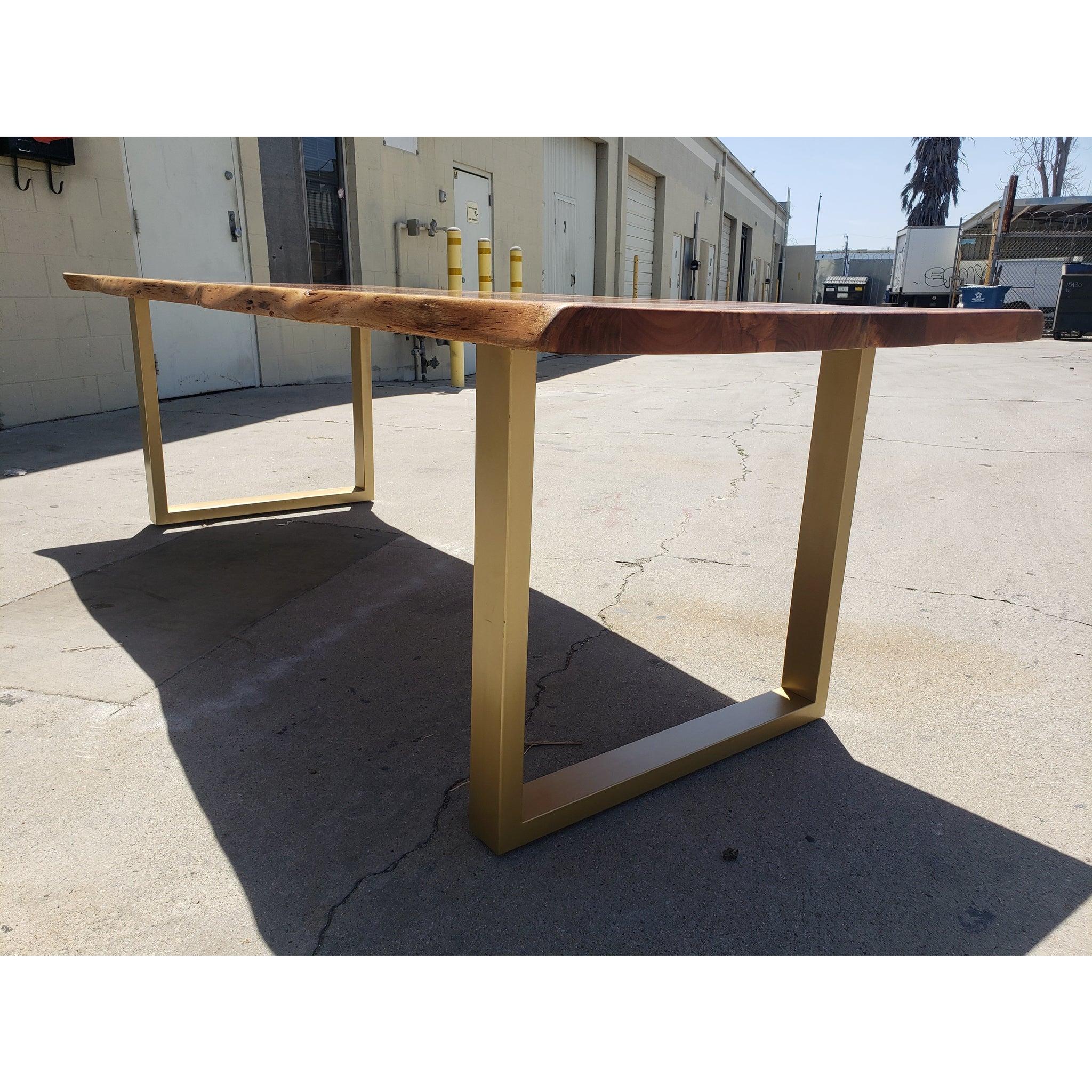Checking Out the Various Kinds Of Eating Table Legs Timber for Your Eating Space
The choice of table legs wood can exceptionally influence both the aesthetic and functional top qualities of your eating area. Solid timber alternatives, such as oak and walnut, provide a traditional look with unmatched toughness, while engineered wood choices provide ingenious layouts that mimic the splendor of all-natural grains. In addition, the expanding trend of redeemed timber introduces a lasting element that appeals to eco aware consumers. As we discover these numerous options, it becomes vital to think about not only the aesthetic appeal yet likewise the functional implications of each product choice. What aspects should assist your choice?
Strong Timber Options

Unlike crafted materials, solid wood is less prone to warping and damage over time when effectively preserved. Each item of strong timber is one-of-a-kind, showcasing individual features that add to the appeal and personality of the dining table.
Additionally, solid timber can be ended up in many means, varying from natural oils to stained finishes, allowing homeowners to personalize their furniture to match their design. In summary, selecting strong timber for dining table legs not just makes sure architectural integrity but additionally improves the visual appeal of the eating area, making it a worthwhile investment for any home.
Engineered Timber Alternatives

Plywood, constructed from numerous layers of wood veneer, is specifically strong and stable, making it an outstanding option for eating table legs. Its split composition enables it to stand up to modifications in humidity and temperature level much better than conventional strong wood. MDF, on the other hand, provides a smooth surface for painting or veneering, enabling designers to achieve a sleek look while keeping architectural integrity.
When selecting crafted wood options, it is crucial to consider the designated usage and wanted visual. These products not only boost the capability of eating spaces but additionally allow for higher design versatility, making sure that contemporary and traditional styles can coexist sympathetically.
Reclaimed Wood Features
Reclaimed wood supplies a special mix of sustainability and character, making it a significantly popular selection for dining table legs. Sourced from old barns, factories, and various other frameworks, redeemed wood personifies a background that brand-new products simply can not replicate. Each item lugs its very own story, noted by distinctive blemishes, knots, and varying grain patterns, which add to a table's unique visual charm.
Along with its visual beauty, redeemed timber is an eco-friendly alternative. By repurposing previously used products, it lowers the demand for new lumber, thus helping to save forests and minimize waste. This straightens with a growing consumer preference for lasting methods in furnishings.
Moreover, redeemed timber is typically extra long lasting than newly collected wood as a result of its age. The all-natural drying process that redeemed wood undergoes results in a denser and stronger material, making it much less at risk to bending and splitting. This improves the longevity of eating tables, permitting them to withstand the roughness of daily use.
Softwood vs. Hardwood
When selecting dining table legs, recognizing the distinctions between softwood and hardwood is crucial for attaining both aesthetic and functional objectives. They usually exhibit a more rustic appearance, making them ideal for casual or country-style eating areas.
On the other hand, woods, sourced from deciduous trees like cherry, oak, and maple, are renowned for their thickness, stamina, and resilience. The elaborate grain patterns and abundant tones of woods give a advanced and timeless appeal, making them ideal for official eating settings. While hardwoods have a tendency to be much more costly and heavier, their strength versus damage typically justifies the investment.
Inevitably, the option in between softwood and hardwood for eating table legs need to straighten with your redirected here design vision, use requirements, and budget, making certain that your eating area shows your individual style while continuing to be useful in time.

Therapies and surfaces
The visual allure and longevity of table legs can be significantly boosted through various finishes and treatments. These procedures not just protect the timber from damage however additionally elevate its look, allowing it to match diverse indoor styles.
One common therapy is tarnishing, which passes through the wood and improves its natural grain while adding shade. Spots provide an abundant, elegant look, allowing homeowners to match their furnishings with existing design. Conversely, clear surfaces such as polyurethane or varnish produce a safety layer without altering the timber's initial shade, ensuring sturdiness against deterioration.
Furthermore, natural oils, like tung or linseed oil, nurture the timber and offer a subtle sheen, all while being environmentally friendly. These oils enable the surface to breathe, avoiding wetness build-up and possible warping.
For those seeking a rustic charm, weathered or troubled coatings can be related to create an aged appearance, including personality to the piece. Eventually, the selection of therapies and surfaces depends on personal choice, desired visual appeals, and the specific wood kind, making it essential to consider these factors when choosing table legs for your space.
Conclusion
Solid timbers, engineered choices, and reclaimed choices each offer distinct advantages, catering to various preferences and needs. Inevitably, the choice of timber type should line up with wanted style, longevity, and environmental considerations, boosting the overall dining experience.
The option of eating table legs wood can profoundly impact both the useful and visual top qualities of your eating room - Dining Table Legs Wood. Strong wood alternatives, such as oak and walnut, offer a timeless appearance with unmatched durability, while crafted wood alternatives use innovative styles that resemble the splendor of natural grains. Strong timber provides a timeless high quality that can boost the overall style of my website a dining area. Each piece of strong timber is special, showcasing individual features that add to the beauty and character of the check it out eating table
Moreover, redeemed wood is often much more resilient than freshly harvested wood due to its age.